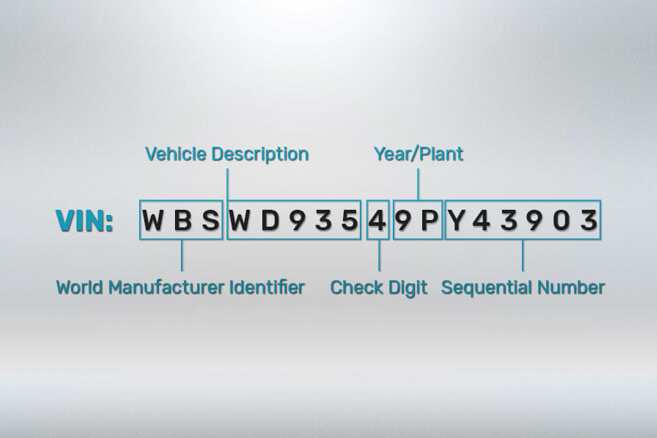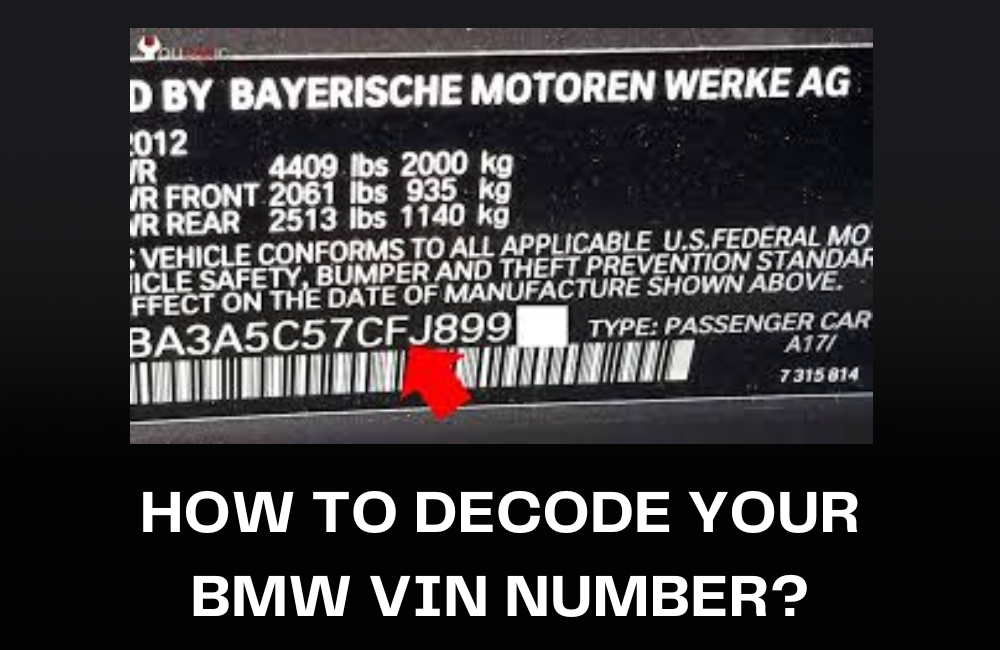When I bought my first BMW, I kept seeing the term “VIN” come up in forums and paperwork.
At first, I thought it was just another line of technical jargon. But over time, I realized that your BMW’s VIN (Vehicle Identification Number) is a goldmine of information.
From the engine type to the factory it was built in, the VIN tells the story of your car’s identity.
Once I learned how to decode it properly, I never looked at my car the same way again.
If you’re curious about what your BMW VIN reveals, here’s everything you need to know from one owner to another.
What Is a BMW VIN and Why Does It Matter?

The VIN is a unique 17-character alphanumeric code assigned to every vehicle. Think of it as your BMW’s fingerprint.
It holds essential information about where and when your car was built, its model, engine, transmission, safety features, and more.
You’ll find the VIN in multiple locations:
-
On the driver-side dashboard (visible through the windshield)
-
On the driver-side door frame
-
On your vehicle registration and insurance documents
-
Inside the iDrive system under vehicle info (on newer models)
Decoding the VIN helped me confirm the exact build specs when buying a used BMW. It also helped when ordering parts, checking recall history, and verifying vehicle authenticity.
The Structure of a BMW VIN: What Each Character Means
The 17-character VIN is broken into specific segments. Here’s how it works and how I learned to break it down:
1–3: World Manufacturer Identifier (WMI)
These first three characters identify the manufacturer and country of origin.
-
WBA – BMW vehicles manufactured in Germany
-
WBX – BMW SAV (Sport Activity Vehicles) from Germany
-
WBS – BMW M models
-
5UX – BMW SAVs made in the U.S. (like the X5 or X3)
-
4US – BMWs built in the U.S. (older models)
-
WBY – BMW i Series (like the i3 and i8)
For example, my 3 Series starts with WBA, which confirmed it was made in Germany.
4–8: Vehicle Descriptor Section (VDS)
These characters describe your BMW’s model, body type, engine, and restraint system. The exact codes vary depending on the year and model.
-
A letter or number here might stand for:
-
Body style (sedan, coupe, convertible)
-
Engine type (petrol, diesel, hybrid, electric)
-
Transmission
-
Airbag system
-
This section gets technical, but you can use online VIN decoders to get a complete breakdown. For me, it confirmed my engine code (N20) and body type (F30 sedan).
9: Check Digit
This digit is used to verify the validity of the VIN. It’s calculated using a specific algorithm. It doesn’t tell you much personally, but it’s used by systems to detect fraudulent or mistyped VINs.
10: Model Year
This character represents the model year of the BMW. It’s often a letter or number:
-
A = 2010
-
B = 2011
-
C = 2012
-
D = 2013
-
E = 2014
-
F = 2015
-
G = 2016
-
H = 2017
-
J = 2018
-
K = 2019
-
L = 2020
-
M = 2021
-
N = 2022
-
P = 2023
-
R = 2024
-
S = 2025
My car had the letter G, which confirmed it was a 2016 model.
11: Assembly Plant
This letter or number tells you which BMW plant assembled your car.
-
A = Munich, Germany
-
B = Dingolfing, Germany
-
C = Regensburg, Germany
-
D = Spartanburg, USA
-
K = Kaliningrad, Russia
Mine showed B, so I knew it was built at BMW’s largest European plant in Dingolfing.
12–17: Production Sequence Number
These final digits are unique to your specific vehicle. It’s like the serial number and doesn’t repeat. You won’t find two BMWs with the same sequence in the same production year.
This number helped me identify my car when checking service records and even helped verify authenticity before I bought it.
How I Decoded My BMW VIN Online
While I could figure out many parts on my own, I used a few reliable tools to get a full spec sheet:
-
BMW VIN Decoder
You enter your VIN and get a list of build options and codes. It even shows the color, trim, and factory-installed features. -
mdecoder.com
This one gave me a breakdown of engine type, transmission, market region, and optional equipment. -
My BMW App / ConnectedDrive Portal
If your car is registered on the BMW portal, you’ll find full details, including your VIN, inside your profile.
Using these tools, I confirmed I had the Sport Line trim, Dakota leather seats, the Tech package, and the Harmon Kardon sound system before I even saw the car in person.
What You Can Learn from Your BMW VIN
Decoding your VIN opens the door to understanding your vehicle better. Here’s what I learned from mine:
-
Exact model and trim
-
Market (European, US, or others)
-
Factory-installed options and features
-
Engine and transmission type
-
Manufacturing plant and build date
-
Emission standards compliance
-
Recall eligibility
-
Genuine vs fake parts compatibility
If you’re buying a used BMW or just want to geek out on your own build sheet, this number tells you far more than you’d expect.
Final Thoughts
Learning to decode your BMW’s VIN is like having a cheat sheet to your car’s DNA. For me, it turned out to be an invaluable tool while shopping for a used 3 Series and again when I needed to order parts that matched my specific trim. It also gave me peace of mind knowing that the car I bought matched its description exactly.
So the next time you see that little 17-digit code on your windshield, don’t ignore it. Run it through a decoder and get to know your BMW a little better. Who knows, you might uncover some interesting factory options or even spot a misrepresented listing.
